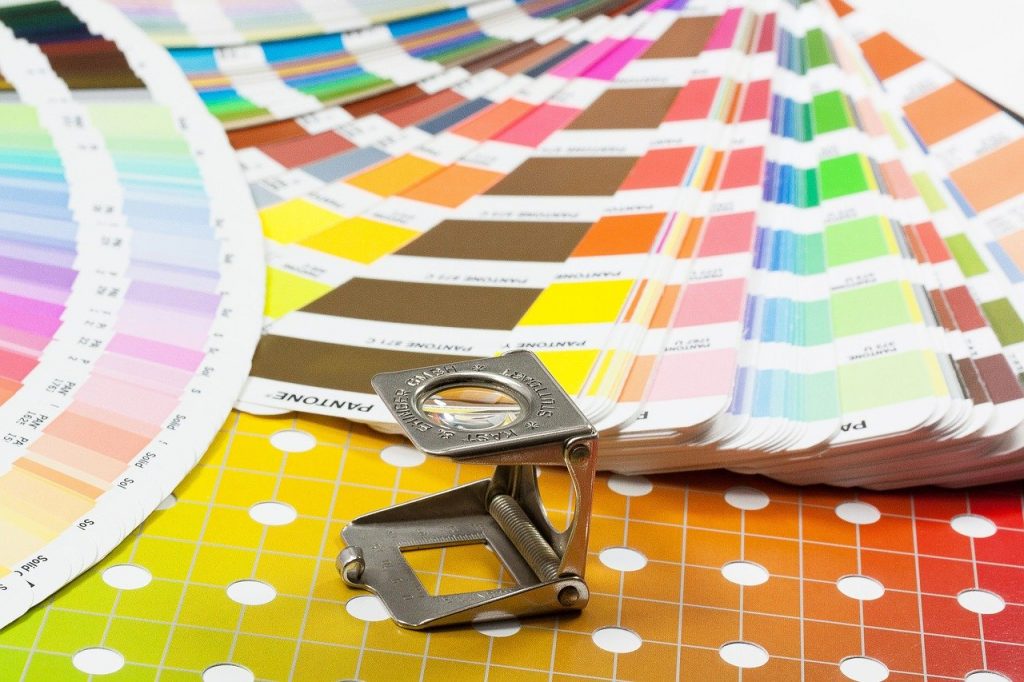
It plays a vital role in design and in everyday life It can attract your eye to a specific image Or evoke a certain mood or feeling in yourself And even to communicate important information without using words at all So, how do we know which colors are appropriate for each other, and which are not appropriate for each other? The answer is simple: color theory Artists and designers have followed color theory for centuries However, anyone can know more about it It can make you confident in many different situations Whether you are choosing colors for a design … Or choose the colors of clothes to buy All it takes is a little bit of insight, after which you will look at colors in a completely different way Let’s start from the beginning, from scratch by reminding you of the basics Remember what you learned in school about primary and secondary colors? So you really do have some information on color theory Red and yellow make up orange, yellow and blue make green, blue and red make violet If we mix these colors together, we get a greater number of hues, like orange red, and lemon yellow All together, they form what is known as the “color wheel”.
(From the picture, you may have known why it was called by this name) Now, let’s go a little deeper and learn some of the terms: hue, saturation and value You may not have used these terms in everyday life before, but they are the key to a more understanding of the single color tones Like all of these cards in the home wall paint stores (Dye) is the easiest of these terms to understand, it is just another word for (color) As for (saturation), it means (density), that is, whether the color is dull, bright or bright As for (value), it is due to the color being dark or light Gradually from black to white As you can see, this gives us many different shades of color From dark reddish brown to light pink pastel So, how do we put all this together to create professional-looking color schemes? There are already real, proven formulas that rely on something called “color harmony” and they can help you All you need is the color wheel The easiest formula to achieve harmony is monochromatic, because it uses only one color (or so-called dye) Just pick a color from the color wheel, and use your pre-saturation and value knowledge to create different shades The best thing about monochrome systems is that they are guaranteed harmony The Color Match system uses consecutive colors on the color wheel Such as shades of red and orange, or cooler colors, such as shades of blue and green Be comfortable and manipulate as you like and create for yourself a unique style These equations are just the beginnings for you to inspire you to start after (Complementary colors) are those that are opposite each other on the color wheel, such as, blue and orange Or classic red and green To avoid seemingly simple complementary colors, diversify them by using other shades that are dark, light, or faded The “Complementary Split Color” system uses colors that are on either side of the complementary color of the color that you choose This gives you the same level of difference and clarity, but gives you more colors to use Hence, you will find more impressive results (Tri-color) system uses three colors evenly spaced on the color wheel, taking the shape of an equilateral triangle These combinations tend to be striking, especially when they are with primary or secondary colors Therefore, be careful when using it in your work Quad-color systems on the wheel use a complementary pair of colors, not just one This formula works best if you let one color dominate the design, and the others are marginalized There are a few disliked and desirable things when it comes to color For example, have you ever seen colors that appear to vibrate if you accompany each other? The solution, is to soften those colors (literally), and there’s a simple way to do that Start with one color, and try to set, lighten, darken, or fade Sometimes, a little contrast is all you need for your color palette Readability is an important factor in any design Your color should be easy to read, comfortable to the eye Sometimes this may mean that no color is used at all, or at least not in every small detail Neutral colors such as black, white, and gray can help you balance your design And when you use the colors, they will look unique Each color delivers a message (to whom it is seen) It is important to consider the nature of your project, and then choose the right colors For example, bright colors tend to be fun or contemporary The faded colors seem to be related to work matters, etc.
Sometimes, depending on the context, these colors are amazing in their flexibility You can find ideas for color schemes in all kinds of interesting places Starting with advertising and marketing Even famous artwork You can use the Internet to browse different color schemes, or to generate your own Even experienced designers take inspiration from the world around them There is nothing wrong with finding what you like, then making it your own Everywhere you look, there are colors, colors, and more colors It may be suspicious if you use it in your business, but it is not supposed to be Just keep experimenting, and don’t forget what you learned about color theory Soon, choosing the cool colors will be your second nature We hope you enjoyed learning the basic information about color Take a look at the rest of our design syllables, including: Art of Writing, Pictures, and Composition